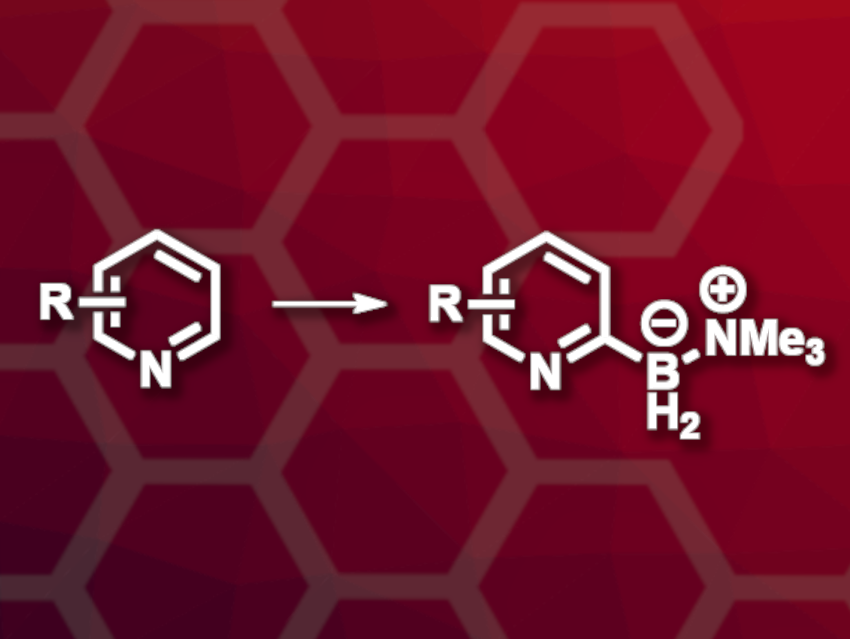Covalent organic frameworks (COFs) are porous crystalline networks made from organic building blocks. They can be useful, e.g., in gas adsorption/separation, sensing, or catalysis. For example, COFs can be promising candidates for heterogeneous photocatalysis. In this context, they have so far mainly been used for water splitting, carbon dioxide reduction, and the hydrogen evolution reaction. In addition, there are a few examples where they have been used in organic synthesis.
Rahul Banerjee, Indian Institute of Science Education and Research, Mohanpur, Kolkata, India, and colleagues have synthesized β-keto-enamine-based COFs that can be used as photocatalysts for metal-free C–B bond formation reactions (example reaction pictured). The team prepared three different COFs using a solvothermal approach. They reacted 1,3,5-triformylphloroglucinol (Tp) with different diamines or triamines, i.e., 4,4′-azodianiline (Azo), 2,8-diamino(6-phenylphenanthridine) (Dpp), or 1,3,5-tris(4-aminophenyl)benzene for (Tab).
All three COFs were active in photocatalytic C–H borylation reactions. The Azo-based COF showed the highest yields among the three. The researchers attribute this to the high specific surface area (2,102 m g–1) and broad light absorbance of this COF. The catalysts were reusable for several cycles.
- Covalent Organic Frameworks as Porous Pigments for Photocatalytic Metal-Free C–H Borylation,
Ananda Basak, Suvendu Karak, Rahul Banerjee,
J. Am. Chem. Soc. 2023.
https://doi.org/10.1021/jacs.3c00950




